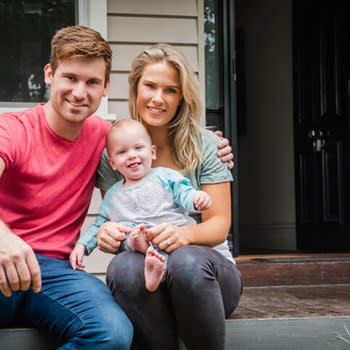Understanding the Washington State Section 8 Application
- Learn about Section 8 in Washington State. Understand how this rental assistance program works, who is eligible, what the program covers and how to apply.
Washington State Section 8 programs are designed to help low-income families, older adults and disabled persons attain clean, safe housing.
The Section 8 Housing Choice Voucher program provides vouchers to people who meet eligibility requirements. These vouchers are used to pay landlords for housing that meets the program's standards.
The program is run by Washington State's public housing authorities (PHAs), but it is funded by a federal housing program called Housing and Urban Development (HUD). The number of housing vouchers available depends on the funds available to HUD, so obtaining a voucher can take some time.
How Does Washington State Section 8 Work?
If you are approved for Section 8, it's up to you to search for a home in the private market that meets HUD's requirements for quality and safety. Not all landlords accept Section 8 vouchers, and quality standards will vary based on location and type of dwelling. You can contact your PHA for a list of approved locations and for the specific quality standards.
Once you find a suitable dwelling, you sign a lease with your landlord and the PHA sends your rent subsidy directly to your landlord. The amount of this subsidy depends on your income and the size of your household. You still bear responsibility for a portion of your rent.
Who Is Eligible for Section 8 in Washington?
The biggest eligibility factors for Section 8 are household size and income. For most locations, a family's income must not exceed 50% of the median income for that county or metropolitan area.
Each PHA is legally required to provide 75% of its voucher to families making 30% of the median income or less. The program is only open to US citizens and specific categories of non-citizens with eligible immigration status.
Applicants must undergo a credit and criminal background check. Sex offenders with lifetime registration requirements and people convicted of violent crimes are ineligible for the program.
People convicted of drug-related crimes are also ineligible, but the PHA can approve their applications if they provide proof of successfully completing a substance abuse treatment program.
How Do You Apply for Section 8 in Washington?
To apply for Section 8, contact the PHA of the area where you want to live. PHAs can have different processes. The waiting lists for Section 8 are long, and each location handles those differently.
Some move applicants through the list in the order they applied while others utilize a lottery system. You can apply through multiple PHAs to increase your chances of moving through the waiting lists sooner.
What Should You Expect From the Application Process?
Your application process will basically move through three stages: application, waiting and verification.
1. Preliminary Application
To begin the application process, find and contact the PHA for the area where you want to live. Someone will let you know when enrollment opens and have you fill out an application. Expect to answer questions related to:
- Number of people in your household and information about each one.
- Social Security numbers or legal immigration status of each household member.
- Your relationship to each household member (HUD defines a family as "a single person or group of persons," so don't worry if there's no blood relation).
- Income and assets
Once you complete your application, you will wait for the PHA to review it. If you qualify, you will be placed on the waiting list.
2. Waiting
Funding cuts to the federal HUD program have resulted in extremely long wait times for Washington State Section 8 vouchers. Each PHA handles that waiting list differently, and you can ask yours for information on what this waiting period looks like.
Often, families with children, older adults, disabled people, homelessness or poor living conditions receive preferences. You should periodically confirm your position on the waiting list and keep your contact and income information up to date for best results.
3. Verification
When you reach the top of the waiting list, you will schedule a briefing appointment. For verification, you should bring these documents for each family member:
- Pay stubs
- Bank statements
- Tax returns
- Court-ordered child support paperwork
- Government benefits award letters
- Birth certificates
Once you turn in your paperwork, you wait for the verification process to be completed. If it is completed successfully, you receive your Section 8 vouchers.
What Should You Do Once You Have Section 8 Housing?
Due to the high number of Section 8 tenants, case managers may be working with hundreds of tenants at any given time. So, it's important to make sure all of your communications are documented. You should make sure communications with the PHA are documented in writing, stamped on the date they are received and placed in your file.
Document the condition of your housing when you move in and when you move out. Keep the PHA aware of all repair requests and potential problems by providing them with copies of all communications with your landlord.
If the landlord refuses to make repairs, the PHA may withhold a portion of the rent until they comply. As long as you pay your share of the rent, you cannot be evicted.
Every year, your eligibility will be reviewed to ensure you still meet the requirements for the program. If you choose to move at the end of your annual lease agreement, you will need to submit your income and household information to get a new voucher. If you violate the conditions of your lease, your landlord has the right to evict you.
Any change in household size or income must be reported within 10 days. Failure to notify the PHA of these changes can result in the termination of your voucher.
How Much Does Section 8 Pay for Rent in Washington State?
This varies based on your family, income and location. Generally, you will pay 30-40% of your income to rent, and your Section 8 voucher will cover the difference. The PHA pays the landlord directly.
Does Section 8 Consider Medical or Mobility Needs?
If you or someone in your family has special medical or mobility requirements for your home, be sure to mention it to your PHA when you apply. PHAs are often able to take these special requirements into consideration.





